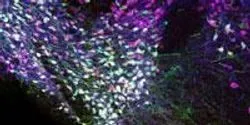Biological Sciences

Dr. Zhaozheng Yin, an assistant professor of computer science at Missouri University of Science and Technology, recently received the National Science Foundation’s most prestigious award for young faculty members for his research into developing algorithms and systems for processing microscopy images of biological specimens.

New research by an international consortium, including a researcher from Lawrence Livermore National Laboratory, may help physicians better understand the chronological development of a brain aneurysm.

A team of researchers from the National University of Singapore’s (NUS) Faculty of Engineering has developed a cost-effective solution for the control of indoor air pollution, especially from the haze. The development of this system is timely in light of the World Health Organization’s (WHO) recent news on the risks of inhalation of particulate matter measuring less than 2.5 microns (PM2.5), which has been linked to a range of cardiovascular and respiratory ailments, including cancer. The new system is easy to use and ideal for use in a range of indoor environments.

When it comes to the brain, wiring isn’t everything. Although neurobiologists often talk in electrical metaphors, the reality is that the brain is not nearly as simple as a series of wires and circuits. Unlike their copper counterparts, neurons can behave differently depending on the situation.

Findings should help narrow the search for genetic contributions of autism and suggest new routes for therapy.

High resolution X-ray crystallography is an imaging technique in which X-ray beams are shot through purified, crystallized proteins. The beam scatters in different directions, allowing scientists to construct a detailed, 3-D model of the crystallized protein's molecular structure. Measuring the intensities and angles of the diffracted beams reveals the position of each atom in the protein.















